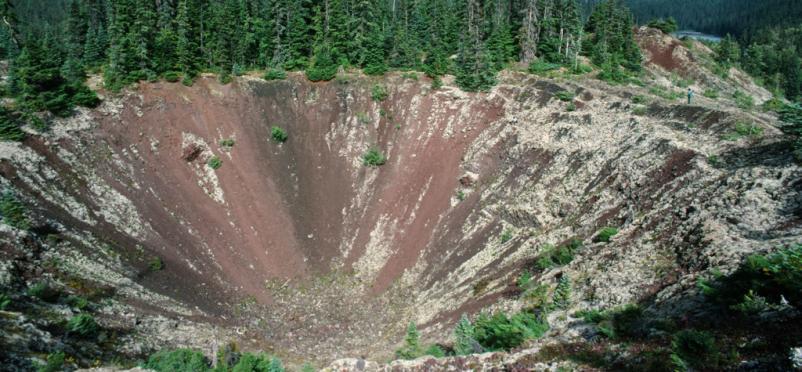Volcano

Canada’s last volcanic eruption occurred in the Nass Valley approximately 263 years ago. The lava destroyed everything in its path, sparked fires in the surrounding forests, and covered two Nisga’a villages. More than 2,000 people perished. Today, the vast lava beds still dominate the Nass Valley. They serve as a memorial to those who lost their lives and as a reminder of the importance of respect — for both the natural world and the wisdom of the elders. Join us for guided tours of the lava beds that tell of Nisga'a history, culture, and clan relationships.
Drop in hiking tours to the Lava Cone leave from the Visitors Centre from July 1 thru Labour Day. The hike is about 3km through scenic old growth forest past volcanic features leading to a great viewpoint overlooking the crater. The hike is rated moderate with some hills, and a few steep stairs. Unguided access to the cone is prohibited. For guided tours, visit Nass Valley Tours, or contact Steve Johnson, Owner and Operator of Nass Valley Tours at 250-641-4400 or email nassvalleytours@gmail.com.
Laxmihl: Where the Fire Ran Out
Long ago, two children were playing down by the river. One child caught a salmon and slit open its back. The child stuck sticks into the salmon’s back, set them on fire, and returned the fish to the river. The children were amused to see the salmon swim erratically, smoke rising from its back. The other child caught a salmon and slit open its back, inserted a piece of shale, and put it back into the river. The salmon floated on its side, weighed down by the shale. The children laughed at the struggling fish. An elder happened upon the scene and warned the children, “Take care what you do. The salmon will curse you and the Creator will respond in kind.” The ground began to tremble and shake. Nature’s harmony had been upset. A scout was sent to investigate. From the top of Gennu’axwt, he saw smoke and flames and ran to warn the people of their fiery destiny. In panic, some villagers fled up the mountain. Others canoed to the far side of the river but were killed by the lava. As the people watched the lava flow over their villages, Gwaxts’agat (a powerful supernatural being) suddenly emerged to block the lava’s advance. For days, Gwaxts’agat fought back the lava by blowing on it with its great nose. Finally, the lava cooled and Gwaxts’agat retreated into the mountain where it remains to this day. — from Nisga’a oral tradition.
The Tseax Cone is still of significant interest to modern-day vulcanologists. For more info, the Smithsonian has info on the Tseax Cone.
